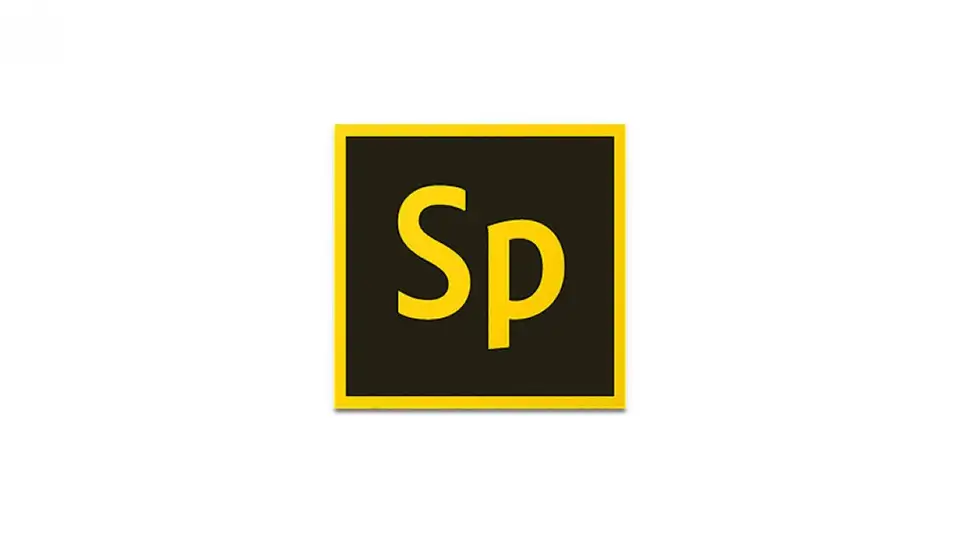Imagine yourself sitting in front of a cozy fireplace, wrapped in a warm blanket, sipping on a hot cup of chocolate. As you look out the window, snowflakes slowly dance in the air.
Suddenly, your mind is flooded with bursts of creativity, and you feel the urge to write a story. But wait, what kind of story should you write? A novel or a short story?
In this article, we will discuss the advantages and disadvantages of writing short stories, so you can make the right decision.
Whether you are an experienced writer or a beginner, short stories can be a great way to explore your creativity. They allow you to experiment with different writing styles and techniques and can be completed in a shorter amount of time than novels.
However, writing short stories also comes with its own challenges. It requires you to condense your ideas and characters into a limited number of words, which can be difficult.
So, before diving into the world of writing short stories, let's take a closer look at the pros and cons.
Key Points
- Writing short stories allows for experimentation with writing styles and techniques.
- Short stories have a shorter completion time compared to novels.
- Short stories require filtering ideas into essential elements to create a focused story.
- Short stories are valuable and showcase writing skills, but are limited in terms of genre and subject matter.
Advantages of Writing Short Stories
Writing short stories can be highly beneficial because you can create an entire world in just a few pages. You have the power to craft meaningful and impactful characters, settings, and plots in a concise format. This is important because it allows you to filter your ideas into the most important elements, resulting in a focused and impactful story.
Additionally, writing short stories can be very valuable. In a world where people are always on the go and have limited time, short stories can provide a quick and satisfying literary solution. It's also a great way to showcase your writing skills to potential publishers and readers. By honing your skills and producing quality short stories, you can establish yourself as a talented and versatile writer in the literary world.
Disadvantages of Writing Short Stories
Although short, crafting a short narrative may pose certain challenges that need consideration. As you explore the limitations and weaknesses of writing short stories, you may find it difficult to fully develop characters and storylines within the limited word count. This can make it challenging to create an engaging narrative that satisfies readers.
Additionally, writing short stories can limit genre and subject matter. Some stories may require a longer format to fully explore complex themes or convey deeper messages. Despite having limitations, there are still ways to find inspiration and overcome the challenges of writing short stories.
One approach is to focus on specific moments or events in a character's life, rather than attempting to tell their entire story. This allows you to create a compelling narrative that still satisfies readers, even within a limited word count. Another strategy is to experiment with different genres and writing styles to find what best suits your ideas.
By embracing the limitations of writing short stories and exploring new approaches, you can unleash your creativity and produce innovative and impactful work.
Tips for Writing Compelling Short Stories
If you want to write compelling short stories, focus on one idea or theme that you can develop throughout the plot.
Create compelling characters that readers can understand and empathize with.
Use vivid descriptions and imagery to transport your readers to the world you've created and make them feel like they're part of the story.
By following the tips below, you can craft short stories that captivate audiences and leave a lasting impression.
Focus on One Idea or Theme
Focusing on one idea or theme can enhance the impact of a short story, allowing readers to connect with the story on a deeper level. Exploring themes is an essential aspect of writing compelling short stories. By sharpening one central concept, you can create a more thought-provoking piece that will leave a lasting impression on your readers.
Here are four ways to effectively focus on one idea or theme:
- Choose a topic that resonates with you: Writing about something you're passionate about will make it easier for you to develop the theme and convey your message.
- Use symbolism: Symbolism can add layers of meaning to your story and help you convey the theme in a more powerful way.
- Keep it simple: Don't try to tackle too many themes at once. Stick to one central idea and explore it thoroughly.
- Use brevity to your advantage: Short stories are about brevity, so make every word count. Be concise and focus on the most important aspects of your theme.
By following these tips, you can create impactful and memorable short stories. Remember, the impact of brevity can be incredibly powerful when used correctly.
Create Compelling Characters
To create compelling characters, you need to pay attention to details such as personality traits, past experiences, and goals. In fact, a study found that readers are more likely to remember characters who have different personalities and motivations.
So, take the time to explore your characters' motivations and craft them in a way that feels authentic and relatable. Crafting dialogue is also a crucial aspect of creating compelling characters.
Dialogue can reveal personality, motivation, and background. It can also help drive the story forward and create tension. When writing dialogue, it's important to ensure that it sounds like something your characters would actually say, rather than just a plot device.
By paying attention to these details, you can create characters that will be remembered by readers long after they finish your story.
Use Clear Imagery and Description
Using clear imagery and description is an essential skill for any writer looking to create a truly immersive reading experience. By using sensory language, you can transport your readers to the world you've created in your short story.
Whether it's the smell of freshly cut grass or the sound of raindrops hitting the window, precise descriptions can make a big difference. Creating a unique voice is also key to making your short story stand out.
You want your readers to feel like they're hearing a story from a particular person, not just a generic narrator. Your voice should be distinct and memorable, so that your readers will come back to your work time and time again. Overall, using vivid imagery and description, as well as a unique voice, will help make your short story a rich and unforgettable experience for your readers.
Examples of Successful Short Stories
You might be wondering what makes a short story successful. Well, let's look at three examples:
'The Lottery' by Shirley Jackson, 'The Yellow Wallpaper' by Charlotte Perkins Gilman, and 'Hills Like White Elephants' by Ernest Hemingway.
These stories have been widely acclaimed for their unique styles, captivating plots, and thought-provoking themes. So, what makes these stories stand out?
Let's delve in and find out.
The Lottery by Shirley Jackson
Shirley Jackson's short story 'The Lottery' has been widely discussed and analyzed by literary critics and readers alike.
Published in The New Yorker in 1948, the story is a chilling portrayal of the annual lottery of a small town where the winner is stoned to death by the other villagers. What makes 'The Lottery' a powerful and enduring piece of literature? Here are three factors to consider:
- Symbolism analysis: Jackson employs a number of symbolic elements in the story, including the black box, slips of paper, and the stones. Each of these symbols represents something larger than itself and contributes to the overall meaning of the story.
- Historical context: 'The Lottery' was written after World War II, a time when people grappled with the horrors of the Holocaust and atomic bombs. Jackson's story can be seen as a commentary on the dangers of blindly following tradition and the potential for violence within society.
- Narrative structure: Jackson's skilled use of point of view and pacing creates a sense of tension and foreboding throughout the story. Readers are gradually drawn into the dark secrets of the town, and the shocking ending leaves a lasting impact.
The Yellow Wallpaper by Charlotte Perkins Gilman
If you haven't read 'The Yellow Wallpaper' by Charlotte Perkins Gilman, you're missing out on a very vivid portrayal of a woman's descent into madness.
The story is told from the perspective of a woman confined to her bedroom due to an illness. Over time, she becomes increasingly obsessed with the yellow wallpaper in her room, eventually seeing a trapped woman behind its pattern.
This story is a prime example of the power of symbolism and its ability to convey deep emotions and themes.
Viewed from a feminist perspective, it's clear that Gilman is making a statement about the oppression of women in a patriarchal society. The woman in the story is forced to conform to her husband's and society's expectations, ultimately leading to her downfall.
The yellow wallpaper can be seen as a symbol of the constraints placed on women, depicted as both a prison and a cage.
Overall, 'The Yellow Wallpaper' is a must-read for anyone interested in symbolism analysis or feminist literature.
Hills Like White Elephants by Ernest Hemingway
If you enjoyed 'The Yellow Wallpaper,' you'll definitely want to check out 'Hills Like White Elephants' by Ernest Hemingway. The story features a couple having a conversation at a train station while waiting for their train.
As the conversation progresses, it becomes clear that they are discussing whether or not to have an abortion. Unlike 'The Yellow Wallpaper,' Hemingway's story is much shorter and uses a minimalist writing style.
In 'Hills Like White Elephants,' Hemingway uses symbolism analysis to depict the emotions and thoughts of the characters. The title itself is a symbol representing the uncertainty and ambiguity of the couple's situation. Through their dialogue, Hemingway also reveals the true nature of their characters, showing their differing motivations and values.
Like 'The Yellow Wallpaper,' Hemingway's story is a great example of how a short story can have a powerful impact with its concise and intentional writing style.
- Symbolism analysis adds depth and complexity to Hemingway's story. The use of symbolism allows readers to interpret the emotions and thoughts of the characters without the need for explicit exposition.
- The minimalist writing style of 'Hills Like White Elephants' emphasizes the importance of every word and phrase. Hemingway's deliberate use of language creates tension and unease throughout the story, enhancing its impact.
Conclusion
Writing short stories can be a great way to flex your creative muscles and hone your storytelling skills. The advantages of short stories include their brevity, accessibility, and ability to quickly capture readers' attention. However, there are also some drawbacks, such as the challenge of fitting a complete story into a limited word count.
So what are you waiting for? Start writing short stories today and see where your imagination takes you.
With the right skills and a little luck, you could be the next Ernest Hemingway, creating stories that captivate the hearts and minds of readers everywhere. (Hyperbole Alert: You might even become a literary sensation overnight!)
 Indonesia
Indonesia 









